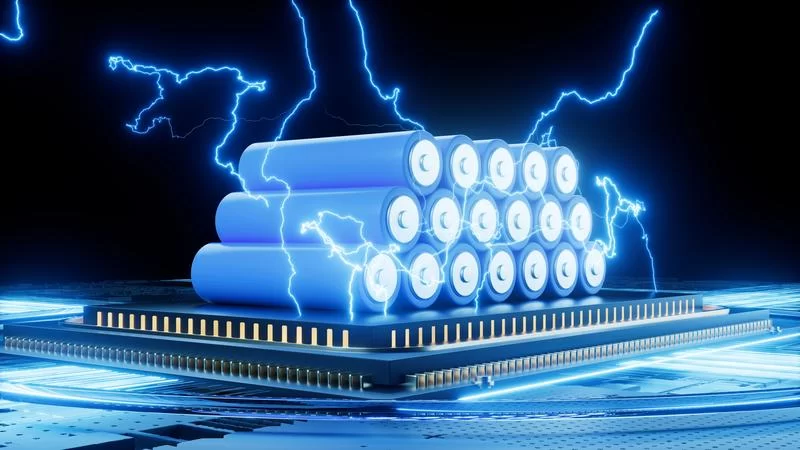The Technology Behind Water-Based Lithium-Ion Batteries: A Closer Look

Water-based lithium-ion batteries are positioned to rapidly emerge as perhaps the most potentially promising alternative to traditional lithium-ion technologies. Advancements in further safety, cost reduction, and energy density will make water-based lithium-ion batteries a game-changing solution for energy storage. But what is so special about these batteries, and how do they compare to their conventional counterparts?

Understanding Water-Based Lithium-Ion Batteries
The main novelty of aqueous LIBs is the use of water as a primary component of the electrolyte. Traditional LIBs use organic solvents, dangerous from the point of view of safety; hence, water-based electrolytes are much safer. Water is non-flammable; hence, such a possibility of the battery catching fire or even explosion is potentially less. Safety becomes crucial in applications when energy storage systems would be scaled up-for example, electrical vehicles or grid-scale storage.
Apart from safety, the use of water-based electrolytes can reduce production costs. Traditional organic solvents are highly expensive and require extreme care due to their flammability and toxicity in handling. In contrast, water is one of the most available and cheapest resources on earth, which makes the manufacture of water-based lithium-ion batteries cheaper.
Boosting Energy Density and Performance
Despite the safety advantages, one of the challenges that always faced water-based batteries is a low energy density. Traditional lithium-ion batteries can run at voltages as high as 4V while water-based variants tend to top out at around 1.2V. But recent work has begun to close that gap. The developers are working on water-in-salt electrolytes that will let them operate at higher voltages without sacrificing the water-based systems' safety advantages.
Such modifications include the addition of specific halogen ions to the electrolyte, like bromine and iodine, which have demonstrated a remarkable rise in energy density. In fact, this innovation has increased water-based LIB performance, at times doubled, a factor which makes them competitive with traditional systems. The development clearly showed how scientists creatively pushed the limits beyond what water-based lithium-ion technology can handle.
Safety and Environmental Impact
Water-based lithium-ion batteries are also under consideration in the frontline, as they have already shown their capability of reducing environmental impact. Traditional batteries use chemicals that pose a certain danger to the environment if not disposed of properly. The water-based ones reduce contamination risks and are easier to recycle. Moreover, without organic solvents in manufacture, the carbon footprint is reduced and such batteries become much greener.
This isn't without its challenges. Low-voltage threshold-weaker power output than that of the conventional systems-is one of the most sizeable tests for this technology. However, with the progress on water-salt electrolytes and high-capacity cathode materials, research is trying to push beyond this limit.
Future Potential and Applications
Ranging from a use in electric cars to large-scale energy storage facilities, the possibilities with the ever-evolving technology of water-based lithium-ion batteries are endless, offering the potential for a safer and more environmentally friendly alternative for energy storage than the ones currently in use. Furthermore, due to their lower production cost and reduced environmental impact, these batteries are positioned to play a key role in the drive toward cleaner, more sustainable energy.
The only question then that remains is how fast the industry can take these barriers to make them overcome technically and reach these batteries to the market. Once research continues, we may see large-scale deployments of these innovations.
A Practical Example: Energy Storage Systems
Energy storage systems are crucial in the stabilization of power grids, more so as we integrate more renewable energy sources like solar and wind. Water-based lithium-ion batteries could, hence, play a very important role in the provision of a safer and more cost-effective solution for grid storage. These batteries reduce the risk of fire and explosions and, therefore, offer a good option for urban environments where safety cannot be compromised.
FAQs
How do water-based lithium-ion batteries compare to traditional lithium-ion batteries?
Water-based lithium-ion batteries offer enhanced safety and lower production costs but typically have lower energy density. Recent advancements, such as water-in-salt electrolytes, are improving their performance.
What applications can benefit from water-based lithium-ion batteries?
These batteries are ideal for energy storage systems, electric vehicles, and other applications where safety and sustainability are critical.
Are water-based lithium-ion batteries environmentally friendly?
Yes, they reduce the use of harmful chemicals and are easier to recycle, making them a more eco-friendly option compared to traditional batteries.
